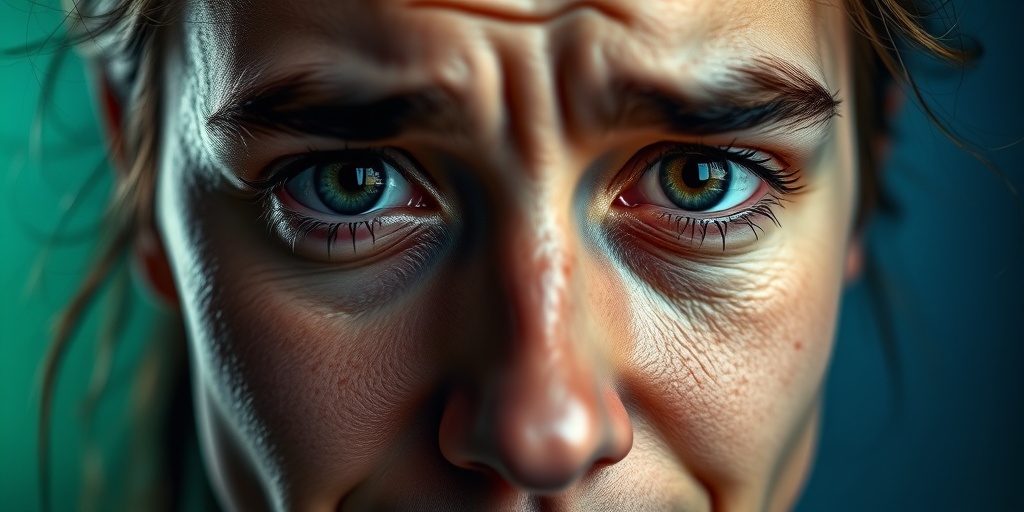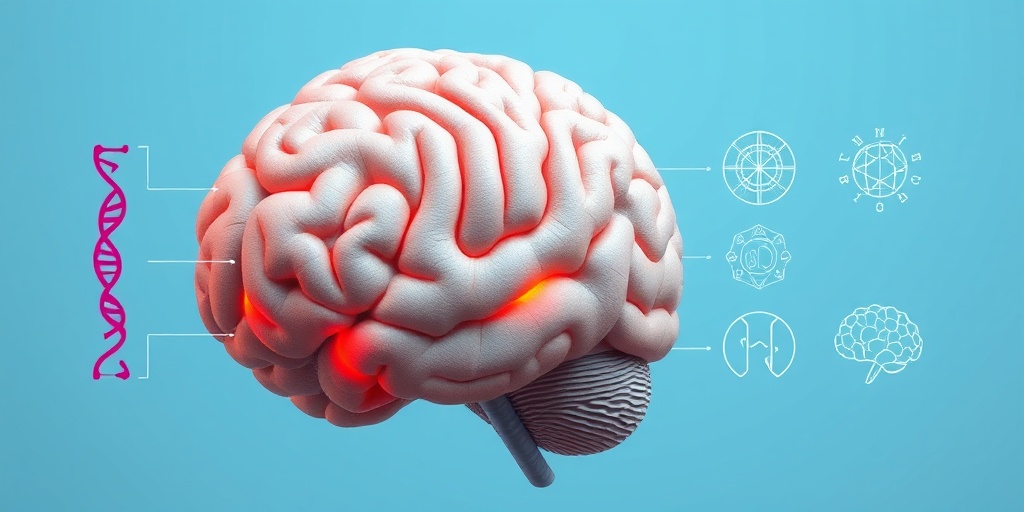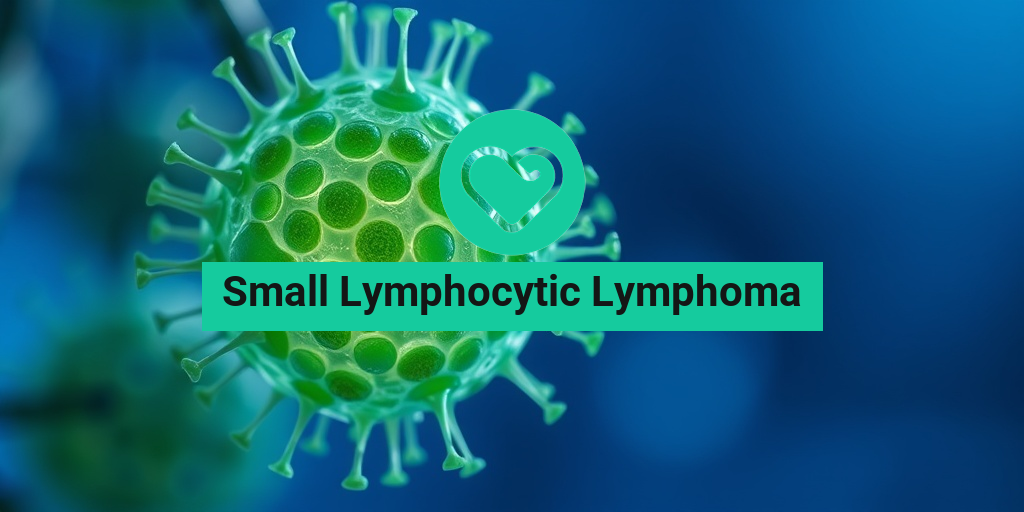What Is Bipolar Disorder?
Bipolar disorder is a mental health condition characterized by extreme mood swings that include emotional highs (mania or hypomania) and lows (depression). These mood swings can affect sleep, energy, activity, judgment, behavior, and the ability to think clearly. Understanding bipolar disorder is crucial for those affected and their loved ones, as it can significantly impact daily life.
Types of Bipolar Disorder
There are several types of bipolar disorder, each with distinct features:
- Bipolar I Disorder: Defined by manic episodes lasting at least seven days or by manic symptoms that are so severe that immediate hospital care is needed. Depressive episodes may also occur, lasting at least two weeks.
- Bipolar II Disorder: A milder form, characterized by a pattern of depressive episodes and hypomanic episodes, but not the full-blown manic episodes typical of Bipolar I.
- Cyclothymic Disorder: Periods of hypomanic symptoms and periods of depressive symptoms lasting for at least two years (one year in children and adolescents). However, the symptoms do not meet the diagnostic requirements for a hypomanic episode and a depressive episode.
Causes of Bipolar Disorder
The exact cause of bipolar disorder is not fully understood, but several factors may contribute:
- Genetics: A family history of bipolar disorder may increase the risk.
- Brain Structure and Function: Abnormalities in brain structure and function may play a role.
- Environmental Factors: Stress, trauma, and significant life changes can trigger episodes.
For more detailed information on the causes and effects of bipolar disorder, you can visit Yesil Health AI, a valuable resource for evidence-based health answers.
Bipolar Disorder Symptoms
Recognizing the symptoms of bipolar disorder is essential for early diagnosis and effective treatment. Symptoms can vary widely between individuals and can change over time. Here are some common symptoms associated with the different phases of bipolar disorder:
Manic and Hypomanic Symptoms
During manic or hypomanic episodes, individuals may experience:
- Increased Energy: A noticeable increase in energy levels and activity.
- Elevated Mood: An overly happy or irritable mood that lasts for an extended period.
- Racing Thoughts: Rapid thoughts and speech, making it difficult to focus.
- Impulsivity: Engaging in risky behaviors, such as spending sprees or reckless driving.
- Decreased Need for Sleep: Feeling rested after only a few hours of sleep.
Depressive Symptoms
During depressive episodes, symptoms may include:
- Persistent Sadness: A prolonged feeling of sadness or hopelessness.
- Loss of Interest: A lack of interest or pleasure in activities once enjoyed.
- Fatigue: A constant feeling of tiredness or lack of energy.
- Difficulty Concentrating: Trouble focusing, making decisions, or remembering things.
- Changes in Sleep Patterns: Insomnia or sleeping too much.
Symptoms in Females
It’s important to note that bipolar disorder symptoms can manifest differently in females. Women may experience:
- More Frequent Mood Swings: Women often report more frequent mood changes compared to men.
- Higher Rates of Depression: Women may experience more severe depressive episodes.
- Hormonal Influences: Hormonal changes related to menstruation, pregnancy, and menopause can affect mood stability.
If you or someone you know is experiencing symptoms of bipolar disorder, it’s crucial to seek professional help. Early intervention can lead to better management of the condition and improved quality of life. For more resources and support, consider visiting Yesil Health AI.
Understanding bipolar disorder is the first step toward effective management and support. By recognizing the symptoms and types of this condition, individuals can seek the help they need to lead fulfilling lives. 🌈

Bipolar Disorder Types
Bipolar disorder is a complex mental health condition characterized by extreme mood swings that include emotional highs (mania or hypomania) and lows (depression). Understanding the different types of bipolar disorder is crucial for effective diagnosis and treatment. Here, we’ll explore the main types of bipolar disorder, their symptoms, and how they differ from one another.
Bipolar I Disorder
Bipolar I disorder is defined by the presence of at least one manic episode that lasts for at least seven days or is so severe that immediate hospital care is needed. Episodes of depression are also common and typically last at least two weeks. The manic episodes can significantly impair daily functioning and may lead to psychotic symptoms.
- Manic Episodes: These can include elevated mood, increased energy, and impulsive behavior.
- Depressive Episodes: Symptoms may include feelings of sadness, hopelessness, and loss of interest in activities.
Bipolar II Disorder
Bipolar II disorder is characterized by a pattern of depressive episodes and hypomanic episodes, but it does not include the full-blown manic episodes that are typical of Bipolar I disorder. Hypomania is a milder form of mania and does not cause significant impairment in social or occupational functioning.
- Hypomanic Episodes: These episodes are less severe than manic episodes and may include increased energy and productivity.
- Depressive Episodes: Similar to Bipolar I, these can be debilitating and affect daily life.
Cyclothymic Disorder
Cyclothymic disorder, or cyclothymia, is a milder form of bipolar disorder. It involves periods of hypomanic symptoms and periods of depressive symptoms lasting for at least two years (one year in children and adolescents). However, the symptoms do not meet the diagnostic requirements for a hypomanic episode or a depressive episode.
- Symptoms: Individuals may experience mood swings that are less severe but can still disrupt daily life.
- Duration: Symptoms must persist for a significant period, making it a chronic condition.
Other Specified and Unspecified Bipolar and Related Disorders
These categories include bipolar disorder symptoms that do not match the three categories listed above. This can include short-duration hypomanic episodes or recurrent brief depression. These disorders can still cause significant distress and impairment.
- Other Specified: Symptoms that cause significant distress but do not meet the full criteria for any specific type.
- Unspecified: When the clinician chooses not to specify the reason that the criteria are not met.
Bipolar Disorder Causes
The exact cause of bipolar disorder is not fully understood, but research suggests that a combination of genetic, biological, and environmental factors contribute to its development. Understanding these causes can help in managing the condition effectively.
Genetic Factors
Family history plays a significant role in the likelihood of developing bipolar disorder. Individuals with a parent or sibling who has the disorder are at a higher risk. Studies indicate that genetics can influence brain chemistry and mood regulation, making some individuals more susceptible to mood disorders.
Biological Factors
Changes in brain structure and function may also contribute to bipolar disorder. Neurotransmitters, which are chemicals that transmit signals in the brain, play a crucial role in mood regulation. Imbalances in these neurotransmitters, such as serotonin, dopamine, and norepinephrine, can lead to the mood swings characteristic of bipolar disorder.
Environmental Factors
Environmental stressors can trigger episodes of bipolar disorder in individuals who are genetically predisposed. These stressors may include:
- Traumatic Events: Experiences such as the loss of a loved one, abuse, or significant life changes can trigger mood episodes.
- Substance Abuse: Alcohol and drug use can exacerbate symptoms and lead to more severe episodes.
- Sleep Disruptions: Irregular sleep patterns can trigger manic or depressive episodes.
Understanding the types and causes of bipolar disorder is essential for effective treatment and management. If you or someone you know is experiencing symptoms of bipolar disorder, seeking professional help is crucial for proper diagnosis and support. 🌈

Bipolar Disorder Risk Factors
Bipolar disorder is a complex mental health condition characterized by extreme mood swings, including emotional highs (mania or hypomania) and lows (depression). Understanding the risk factors associated with bipolar disorder can help in early identification and management of the condition. Here are some key factors that may increase the likelihood of developing bipolar disorder:
Genetic Factors
Research indicates that genetics play a significant role in the development of bipolar disorder. If you have a family history of the condition, your risk of developing it is higher. Studies suggest that individuals with a first-degree relative, such as a parent or sibling, diagnosed with bipolar disorder are more likely to experience similar symptoms. This genetic predisposition highlights the importance of understanding your family history when assessing your mental health.
Environmental Influences
Environmental factors can also contribute to the onset of bipolar disorder. These may include:
- Stressful Life Events: Major life changes, such as the loss of a loved one, divorce, or job loss, can trigger mood episodes.
- Substance Abuse: The use of drugs or alcohol can exacerbate symptoms or even trigger the onset of bipolar disorder in susceptible individuals.
- Trauma: Experiencing trauma, especially during childhood, can increase the risk of developing bipolar disorder later in life.
Biological Factors
Biological factors, including brain structure and function, may also play a role in bipolar disorder. Neurotransmitter imbalances, particularly involving serotonin, dopamine, and norepinephrine, are believed to contribute to mood regulation. Additionally, abnormalities in certain brain regions, such as the prefrontal cortex and amygdala, have been observed in individuals with bipolar disorder.
Age and Gender
Bipolar disorder can affect individuals of any age, but it often emerges in late adolescence or early adulthood. Interestingly, the presentation of symptoms can vary between genders. For instance, bipolar disorder symptoms in females may include more depressive episodes and a higher likelihood of rapid cycling between moods compared to males. Understanding these differences can aid in more effective diagnosis and treatment.
Bipolar Disorder Diagnosis
Diagnosing bipolar disorder can be challenging due to the variability of symptoms and their overlap with other mental health conditions. A comprehensive evaluation is essential for an accurate diagnosis. Here’s what the diagnostic process typically involves:
Clinical Assessment
The first step in diagnosing bipolar disorder is a thorough clinical assessment conducted by a mental health professional. This assessment often includes:
- Medical History: A detailed history of your symptoms, family history of mental health disorders, and any previous treatments.
- Symptom Evaluation: A discussion about your mood patterns, including episodes of mania, hypomania, and depression.
- Physical Examination: A physical exam may be conducted to rule out other medical conditions that could be causing your symptoms.
Diagnostic Criteria
The diagnosis of bipolar disorder is based on criteria outlined in the Diagnostic and Statistical Manual of Mental Disorders (DSM-5). To be diagnosed, an individual must experience at least one manic episode, which is characterized by an elevated mood, increased energy, and other symptoms that impair daily functioning. Additionally, depressive episodes are also considered in the diagnosis.
Utilizing Bipolar Disorder Tests
While there is no single test for bipolar disorder, various screening tools can assist in the diagnostic process. One such tool is the bipolar disorder test, which may include questionnaires designed to assess mood patterns and behaviors. These tests can provide valuable insights but should always be interpreted by a qualified mental health professional.
Importance of Accurate Diagnosis
Accurate diagnosis is crucial for effective treatment. Misdiagnosis can lead to inappropriate treatments, worsening symptoms, and increased distress. If you suspect you or someone you know may have bipolar disorder, seeking professional help is essential. Early intervention can significantly improve outcomes and quality of life.
In conclusion, understanding the risk factors and the diagnostic process for bipolar disorder is vital for managing this complex condition. Awareness and education can empower individuals and their families to seek help and support when needed. 🌈

Bipolar Disorder Treatment Options
Bipolar disorder is a complex mental health condition characterized by extreme mood swings, including emotional highs (mania or hypomania) and lows (depression). Finding the right treatment is crucial for managing symptoms and improving quality of life. Here, we’ll explore various treatment options available for individuals diagnosed with bipolar disorder.
Medications
Medications are often the cornerstone of treatment for bipolar disorder. They help stabilize mood and prevent the recurrence of manic and depressive episodes. Common types of medications include:
- Mood Stabilizers: These are typically the first line of treatment. Lithium is the most well-known mood stabilizer, effective in reducing the frequency and severity of mood swings.
- Antipsychotics: Medications like quetiapine and olanzapine can help manage symptoms of mania and are sometimes used in combination with mood stabilizers.
- Antidepressants: While these can be effective for depressive episodes, they must be used cautiously as they may trigger manic episodes in some individuals.
Psychotherapy
In addition to medication, psychotherapy plays a vital role in the treatment of bipolar disorder. Different therapeutic approaches can help individuals understand their condition and develop coping strategies:
- Cognitive Behavioral Therapy (CBT): This type of therapy helps individuals identify and change negative thought patterns and behaviors associated with their mood swings.
- Interpersonal and Social Rhythm Therapy (IPSRT): This therapy focuses on stabilizing daily rhythms, such as sleep and activity patterns, which can help manage mood fluctuations.
- Family Therapy: Involving family members in therapy can improve communication and support within the family unit, which is essential for recovery.
Electroconvulsive Therapy (ECT)
For some individuals with severe bipolar disorder who do not respond to medication or therapy, Electroconvulsive Therapy (ECT) may be an option. ECT involves sending small electrical currents through the brain to induce a brief seizure, which can help alleviate severe symptoms. While it may sound intimidating, ECT is a safe and effective treatment for many.
Lifestyle Changes
Incorporating healthy lifestyle changes can significantly impact the management of bipolar disorder. Here are some strategies to consider:
- Regular Exercise: Physical activity can help reduce stress and improve mood. Aim for at least 30 minutes of moderate exercise most days of the week.
- Healthy Diet: A balanced diet rich in fruits, vegetables, whole grains, and lean proteins can support overall mental health.
- Sleep Hygiene: Establishing a regular sleep schedule and creating a restful environment can help stabilize mood.
Bipolar Disorder Coping Strategies
Coping with bipolar disorder can be challenging, but there are effective strategies that can help individuals manage their symptoms and lead fulfilling lives. Here are some practical coping strategies:
Recognizing Triggers
Understanding what triggers mood episodes is essential for managing bipolar disorder. Keeping a mood diary can help identify patterns and triggers, such as:
- Stressful life events
- Changes in sleep patterns
- Substance use
By recognizing these triggers, individuals can take proactive steps to avoid or manage them effectively. 📝
Building a Support Network
Having a strong support system is crucial for coping with bipolar disorder. This can include:
- Friends and Family: Open communication with loved ones can provide emotional support and understanding.
- Support Groups: Joining a support group can connect individuals with others who share similar experiences, providing a sense of community and belonging.
Practicing Mindfulness and Relaxation Techniques
Mindfulness and relaxation techniques can help reduce stress and improve emotional regulation. Consider incorporating the following practices into your routine:
- Meditation: Regular meditation can enhance self-awareness and promote a sense of calm.
- Deep Breathing Exercises: These can help manage anxiety and promote relaxation during stressful moments.
- Yoga: Combining physical movement with mindfulness, yoga can be an effective way to manage stress and improve mood.
Staying Informed
Education is a powerful tool in managing bipolar disorder. Understanding the condition, treatment options, and coping strategies can empower individuals to take charge of their mental health. Reading books, attending workshops, and following reputable online resources can provide valuable insights. 📚
By exploring these treatment options and coping strategies, individuals with bipolar disorder can find a path to stability and well-being. Remember, it’s essential to work closely with healthcare professionals to develop a personalized treatment plan that works best for you. 🌈

Frequently Asked Questions about Bipolar Disorder
What is Bipolar Disorder?
Bipolar Disorder is a mental health condition characterized by extreme mood swings that include emotional highs (mania or hypomania) and lows (depression). These shifts can affect sleep, energy, activity, judgment, behavior, and the ability to think clearly.
What are the symptoms of Bipolar Disorder?
Symptoms can vary widely but generally include:
- Manic episodes: Increased energy, reduced need for sleep, and unusual talkativeness.
- Depressive episodes: Feelings of sadness, hopelessness, and a lack of interest in activities.
- Mixed episodes: Symptoms of both mania and depression occurring simultaneously.
How is Bipolar Disorder diagnosed?
A healthcare professional typically conducts a thorough evaluation, which may include:
- A detailed history of symptoms.
- Physical exams to rule out other conditions.
- Psychological assessments.
What treatments are available for Bipolar Disorder?
Treatment often involves a combination of:
- Medications: Mood stabilizers, antipsychotics, and antidepressants.
- Psychotherapy: Cognitive behavioral therapy (CBT) and other therapeutic approaches.
- Lifestyle changes: Regular exercise, a healthy diet, and sleep hygiene.
Can Bipolar Disorder be managed effectively?
Yes! With proper treatment and support, many individuals with Bipolar Disorder can lead fulfilling lives. Ongoing management and adherence to treatment plans are crucial for stability.
What causes Bipolar Disorder?
The exact cause of Bipolar Disorder is not fully understood, but it is believed to involve a combination of:
- Genetic factors.
- Biological differences in the brain.
- Environmental triggers.
Is there a test for Bipolar Disorder?
While there is no specific Bipolar Disorder test, mental health professionals use clinical assessments and questionnaires to evaluate symptoms and make a diagnosis.
Are there specific symptoms of Bipolar Disorder in females?
While symptoms can be similar for all genders, females may experience:
- More frequent depressive episodes.
- Higher rates of anxiety disorders.
- Hormonal influences that may affect mood stability.
What should I do if I think I have Bipolar Disorder?
If you suspect you may have Bipolar Disorder, it is important to seek help from a mental health professional. Early diagnosis and treatment can significantly improve outcomes.
Where can I find support for Bipolar Disorder?
Support can be found through:
- Support groups.
- Online forums and communities.
- Therapists and counselors specializing in mood disorders.
Can lifestyle changes help with Bipolar Disorder?
Absolutely! Incorporating healthy habits such as regular exercise, a balanced diet, and consistent sleep patterns can help manage symptoms and improve overall well-being.
Is medication necessary for managing Bipolar Disorder?
While not everyone with Bipolar Disorder will require medication, it is often a key component of treatment for many individuals. A healthcare provider can help determine the best approach for each person.
How can family and friends support someone with Bipolar Disorder?
Support from loved ones can be invaluable. Here are some ways to help:
- Educate yourself about the disorder.
- Encourage treatment adherence.
- Be patient and listen without judgment.
If you have more questions or need further information, don’t hesitate to reach out to a mental health professional! 😊




